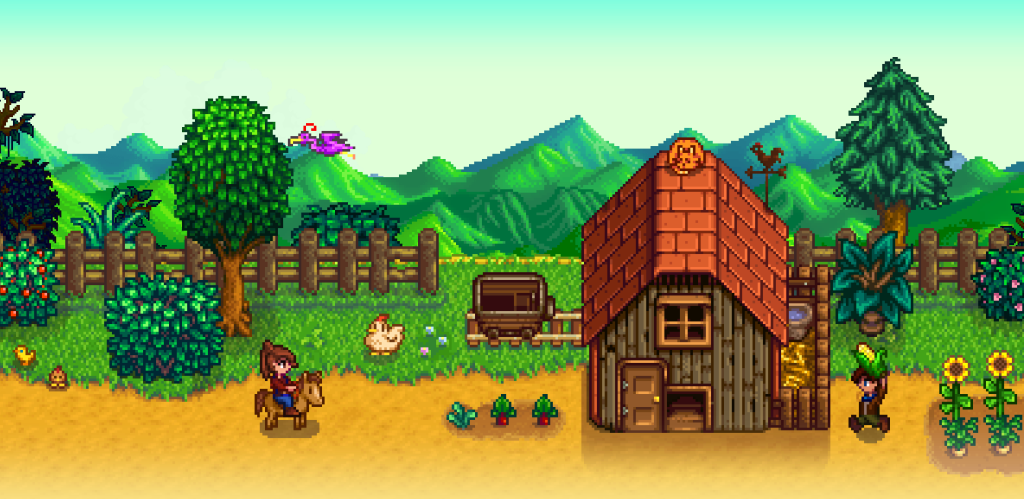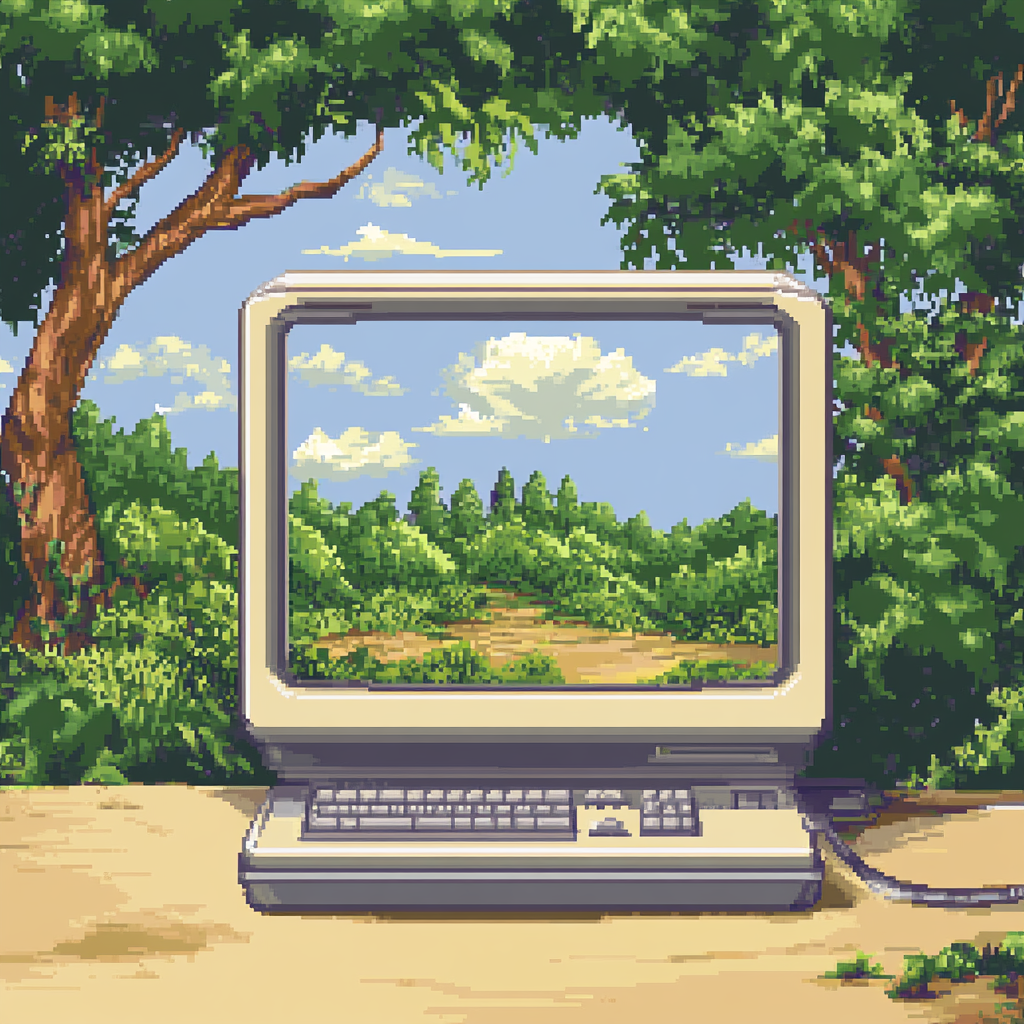The world of gaming has evolved dramatically, and 2D web game development remains a cornerstone of accessible, engaging, and cost-effective game creation. Unlike complex 3D projects, 2D games offer a perfect blend of simplicity and creativity, making them ideal for indie developers, studios, and businesses alike looking to deliver captivating experiences directly through browsers.
This article explores the intricacies of 2D web game development – from choosing the right tools to optimizing performance for seamless gameplay. Learn with us about the key technologies in the matter, design principles involved, and the best practices that have defined successful 2D browser games.
Read as well: 5 key roles in a game development team
2D games vs. 2D web games: what are the primary differences?
In short, the key differences between traditional 2D games and 2D web games lie in their technical implementation, distribution, and player engagement.
Native 2D games are built for specific platforms (PC, console, mobile) using engines like Unity or Godot, requiring downloads through stores like Steam or App Store. This approach allows for deeper hardware access, enabling advanced graphics and complex mechanics, but creates friction for casual players.
Web games instead run instantly in browsers via HTML5/JavaScript/WebGL – eliminating installation barriers altogether but facing stricter technical limitations like JavaScript’s single-threaded nature and file size constraints for quick loading.

Performance capabilities differ significantly – native games leverage full hardware potential for sophisticated visuals and physics, while web games must optimize heavily for browser compatibility and fast startup times. This often results in simpler web game designs, though creative solutions can produce compelling experiences within these constraints.
The choice between formats depends on the target audience and business model. Web games excel at reaching casual players through instant access and typically use ad-based or freemium monetization, benefiting from easy sharing and SEO visibility.
Native games cater better to dedicated gamers willing to pay upfront, offering deeper experiences but requiring marketing efforts for store visibility. Developers must weigh these technical and commercial factors when choosing their development path, as each format serves distinct player expectations and market opportunities.
Why 2D web game development still matters today
Despite the rise of high-end 3D graphics, 2D web game development continues to thrive due to its accessibility and nostalgic appeal. Despite not being web-based, popular games like Among Us, Stardew Valley, and Celeste prove that 2D mechanics, when executed well, can compete with modern AAA titles.
One of the biggest advantages of 2D web game development is its low barrier to entry. Unlike 3D games, which require extensive modeling and rendering pipelines, 2D projects rely on simpler sprites and animations. This makes them faster to develop, easier to optimize, and more compatible with a wide range of devices – including low-end PCs and mobile browsers.

Additionally, web-based 2D games eliminate the need for downloads, allowing instant playability. This frictionless experience is crucial for retaining players ever since the advent of the Internet, especially in casual and hyper-casual gaming markets. Back in the 2000s, when public access to powerful home machines was a thing reserved for science-fiction stories, most teenagers grew up playing these simple, yet social games on their computers, fueling their future passion for dedicated gaming.
Essential tools for 2D web game development
Choosing the right engine is critical in 2D web game development. Some of the most popular options include:
- Phaser.js: A lightweight, open-source framework designed specifically for HTML5 games. It offers robust physics, animation, and asset management tools.
- Construct 3: A no-code engine perfect for beginners, enabling drag-and-drop game creation without programming knowledge.
- Godot: While known for 3D, Godot’s 2D engine is highly efficient, with a dedicated 2D rendering pipeline.
- Unity: Though often associated with 3D, Unity’s 2D tools are powerful, especially when exporting to WebGL.
Each engine has strengths tailored to different project needs. For instance, Phaser.js excels in rapid prototyping, while Unity provides advanced features for more complex games.
Key stages in 2D web game development

Pre-production: laying the foundation
Before writing a single line of code, a structured pre-production phase sets the trajectory for successful 2D web game development. This crucial stage begins with concept art and storyboarding, where artists and designers establish the game’s visual identity, from character designs to environmental aesthetics. These visual guides serve as the blueprint for the entire project, ensuring artistic consistency.
Simultaneously, the team crafts a comprehensive Game Design Document (GDD) that meticulously outlines gameplay mechanics, level progression, scoring systems, and narrative elements. This document acts as the project’s north star, keeping all team members aligned throughout development.
Perhaps most critically, pre-production includes prototyping core gameplay loops. By rapidly testing fundamental mechanics early – such as movement, combat, or puzzle-solving – developers can identify and resolve design flaws before committing to full-scale production. This iterative approach, which our team rigorously applies, prevents costly revisions later in development.
Development: bringing the vision to life
With an approved prototype, the project transitions into full production – the most intensive phase of 2D web game development. Programmers begin implementing physics and collision systems, ensuring characters and objects interact with the game world in a satisfying, predictable manner. These technical foundations must feel responsive and polished, as they directly impact player enjoyment.
Concurrently, UI/UX designers craft intuitive interfaces that provide clear feedback and seamless navigation. Given that web games often target casual players, menus and HUD elements must be immediately understandable, requiring particular attention to visual hierarchy and responsive design principles.

The auditory dimension comes to life through sound design, where Foley artists and composers create immersive audio landscapes. From subtle environmental ambiance to impactful sound effects that reinforce gameplay actions, audio plays a pivotal role in player engagement – a fact our sound team emphasizes in every project.
Throughout this phase, JavaScript serves as the backbone of development, with WebGL integration enhancing graphical capabilities for more visually ambitious projects. This combination allows developers to balance creative aspirations with the performance demands of browser-based gaming.
Optimization: perfecting the player experience
Unlike native applications, web games face unique performance constraints that demand specialized optimization techniques. One critical approach involves creating sprite atlases – consolidating numerous individual image files into single textures. This method dramatically reduces HTTP requests during loading, significantly improving initial load times.
Asset compression represents another vital consideration. Developers must strike an exacting balance between visual fidelity and file size, employing advanced compression algorithms for images and audio without noticeable quality degradation. Modern tools allow for format-specific optimizations, such as WebP for images or Opus for audio.
Lazy loading techniques further enhance performance by deferring the loading of non-essential assets until they’re required. This approach proves particularly valuable for larger web games, ensuring players can begin interacting with the game almost immediately while additional content loads seamlessly in the background.
Monetization: ensuring long-term viability

Even the most engaging games require thoughtful monetization strategies to sustain development efforts. In the realm of 2D web game development, ad-based revenue models remain prevalent, with implementations ranging from discrete interstitial ads between levels to rewarded videos that offer in-game bonuses. These approaches allow games to remain free-to-play while generating income.
Freemium models present another popular option, where the base game is accessible to all players, while cosmetic enhancements or gameplay advantages are available through microtransactions. This model demands careful balancing to maintain fairness and player satisfaction – a challenge our design team navigates with extensive playtesting and analytics.
Some developers opt for premium subscription models, granting paying members exclusive content or early access to new features. This approach works particularly well for games with strong communities and regular content updates.
Increasingly, publishers implement hybrid monetization strategies that combine these elements, such as offering an ad-supported free version alongside a paid ad-free option. The flexibility of web-based distribution allows for ongoing experimentation and adjustment of these models based on player behavior and engagement metrics.
Partner with Main Leaf to produce the web game you want!
Creating a successful 2D web game requires technical expertise, creativity, and meticulous optimization. But no worries – you are in the right place to begin.
At Main Leaf, our team specializes in 2D web game development, offering end-to-end solutions from concept to launch. Whether you’re an indie developer needing support or a publisher looking for a reliable co-development partner, we have the skills to bring your vision to life, as we have been doing with many people from around the world.
So, are you ready to start your next project? Contact Main Leaf today and let’s craft something extraordinary together!

